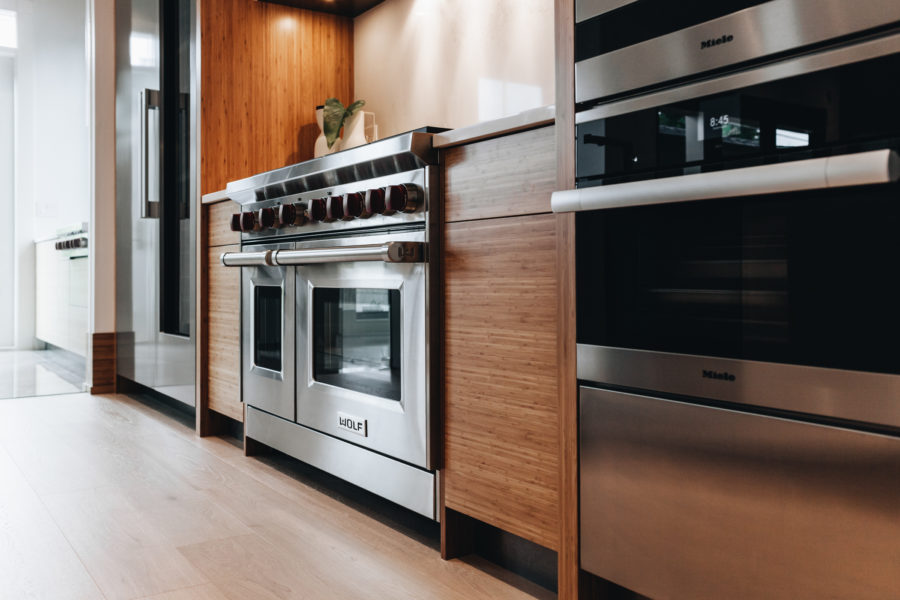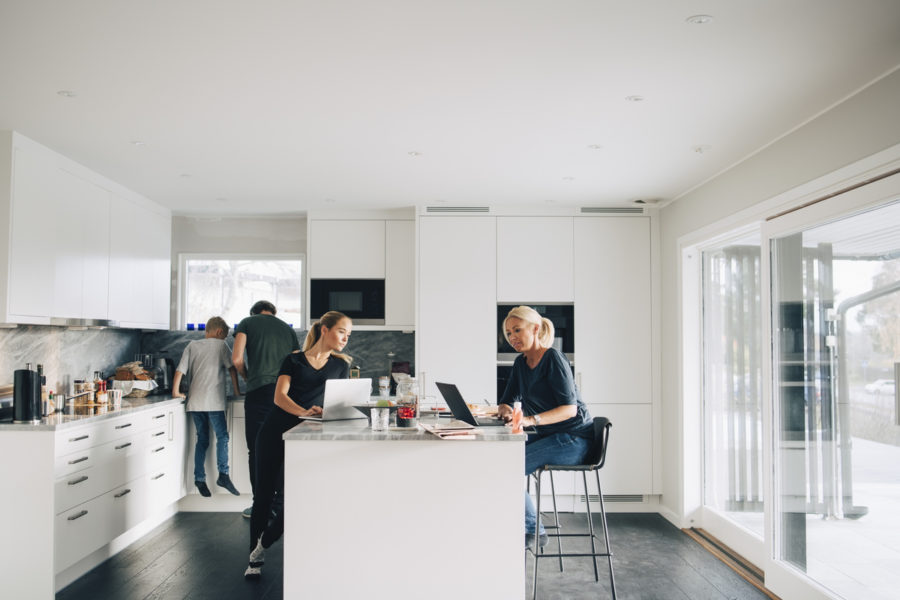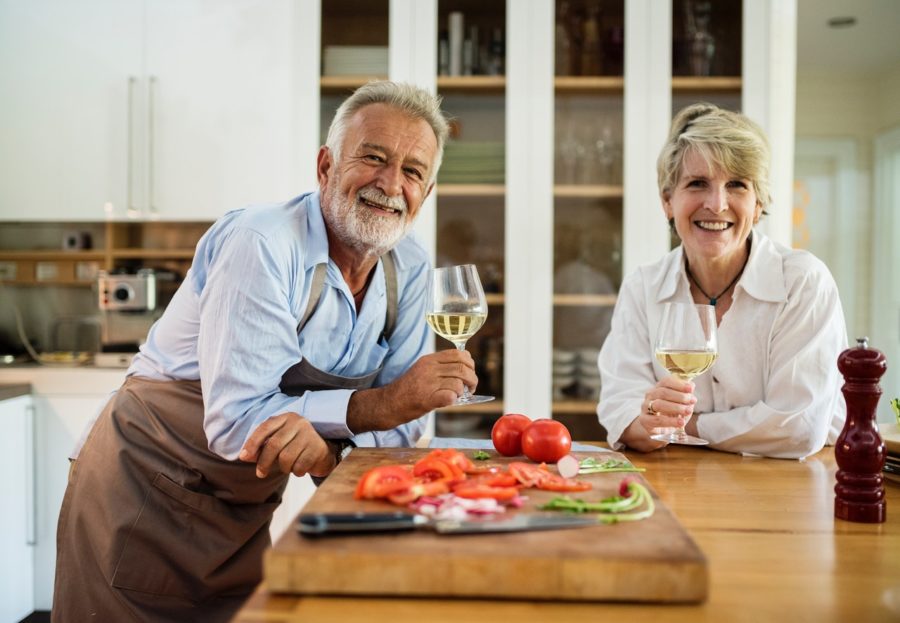“People want to make better use of their time. Technology helps people make some great food in the kitchen. The smart kitchen is coming… Every large kitchen appliance manufacturer in the world has a plan for the smart kitchen.”
Ben Harris, Founder and CEO of Drop and Creative Technologist

The ways we’ve learned about, cultivated, sourced, prepared, gathered, and shared food has consistently evolved since time immemorial. We’re a strange species, and as the single most dominant subgroup of mammals the planet has ever known, human beings are no strangers to adapting to new food trends; whether that be cooking our food over eating it raw, to washing, preparing, and storing food - knowledge, technology, and innovation has always played a massive role in changing the way we view food and use our kitchens.
These days, it’s less about the basics of food preparation and ingredient awareness, and more about awareness of the food industry, the immense health benefits and risks associated with various forms of food growth and cultivation, and a newfound obsession with knowing where our grub comes from, how it made its way to our kitchens, and who grew it.
Technology is changing the ways we behave, use, and interact with our kitchens, and we dove in deep to find out how.
Behaviour
There’s no question that modern technology plays a massive role in our lives now. The vast majority of westerners spend upwards of 4 hours per day staring at a screen, and that doesn’t stop when we enter the kitchen.
We look at ethnic and regional recipes to expand our culinary horizons, consult reviews and opinions about the ease of various recipes online, and we routinely use our smartphones to access this knowledge, exchange ideas, and continue the advancement of new human culinary behaviours. Never before has so much knowledge been available at our fingertips, and it’s affecting how we spend time in the kitchen.

Technology hasn’t only played a significant role in how we behave in the kitchen, but it’s changed our taste buds, and how we buy food as well. Computers and smartphones can point us in the right direction of a local food distributor, the best coffee shop, or a whole foods store with that tempeh you love so much. Apps allow us to have order our food directly to our homes without having to go to the grocery store, and there are literally hundreds of apps that will help you chart out and analyze your weekly eating routine to lead a healthier lifestyle.
Social Media

Social media represents a myriad of tools and technologies that support and share peer-to-peer content creation, and user-generated content. Social media, therefore, is the single most powerful advancer of food culture from a social and dietary perspective. Ever snap a picture of your meal and share it online? According to a recent survey, one third of people have - and that advances and promotes food culture, and inevitably how we behave and interact with our own cooking practices, and our kitchens.
The advancement of more and more single parent households, and longer working hours' means that never before has our species witnessed so many people eating alone. We often have an idyllic picture in our minds’ eye of a family eating together, but an increasing number of people now cook and dine alone. That’s impacted what we prepare for ourselves, and how well we prepare it - but there're alternatives.
The Muk-bang social media trend - translating to eating room” is a webcam-based social media phenomenon wherein a person eats a huge amount of food in front of a webcam, live streaming the experience. This is largely a spectacle of eating ability, but more and more people are using it to create a virtual companion with whom to eat.
There’s an absolutely massive, vast, and seemingly endless amount of food blogs, food forums, and groups on social media these days that use the connective power of the internet and its various social media platforms to connect and unify whole populations of chefs, recipe hunters, and amateur at-home cooks. They share reviews on restaurants, recipes, dining experiences, and cooking techniques to expand and showcase the world of food.
Appliances
Appliances allow us to cook. Our kitchens house our appliances; our fridges, our stoves, microwaves, dishwashers, ovens, etc. The technology we have access to today isn’t just some of the most efficient we’ve ever had access to, it’s also some of the fastest, the most delicate, and the most powerful — and there’s a huge push to further integrate our appliances and how we cook, with our social media and entertainment platforms…
Ready for this?
- Smart kettles can start boiling your tea when you tap a button on an app
- Some toasters can now defrost and reheat foods aside from old school toasting abilities
- Most modern fridges and freezers come equipped with frost-free and auto-defrost features
- Microwaves can now grill, defrost, and some feature convection technology so you can use them as ovens.
Food
Modern technology is - both positively and negatively - altering and changing the food we eat. As the global population balloons to 9 billion people and the climate continues to change and throw us curve balls, food cultivation and security is a huge topic these days. Modern science is changing the ways' food is able to grow, and how we’re able to sustain our population - but that can come with risks.
Genetically modified foods are a food thing in principle - create more food, on a large scale, in less time, for less money, while using fewer resources; sounds like the perfect solution to a world that’s having difficulty feeding all of us. The biotechnology used in genetically modifying foods these days is to resist pests and herbicides, to increase yields, and to grow foods outside of their native ecozones. GMO technology quickly led to modified seeds and soon thereafter the genetic modification of meat, to increase the quickness of animal growth or to add proteins or nutrients to the meat.
There’s a lot of information on GMO’s these days, and we’d only be telling one side of the coin if we left it at that. Informing yourself on the potential risks and benefits of various genetically modified foods is critical so we can all adjust our cooking habits, and how we interact with food in our own foods.
----
New technology is allowing us to track, critique, and shape the modern food industry, as well as the ways we prepare food in our own homes. It’s uniting, us, helping us explore our world and develop new perceptions of differing cultures.
Technology is helping to create a modernized version of what family means, and how we interact with our loved ones and other people in the heart of our homes. The kitchen we know today may change, but the defining characteristics will always remain; the kitchen is where we gather, where we eat, and where we became us.